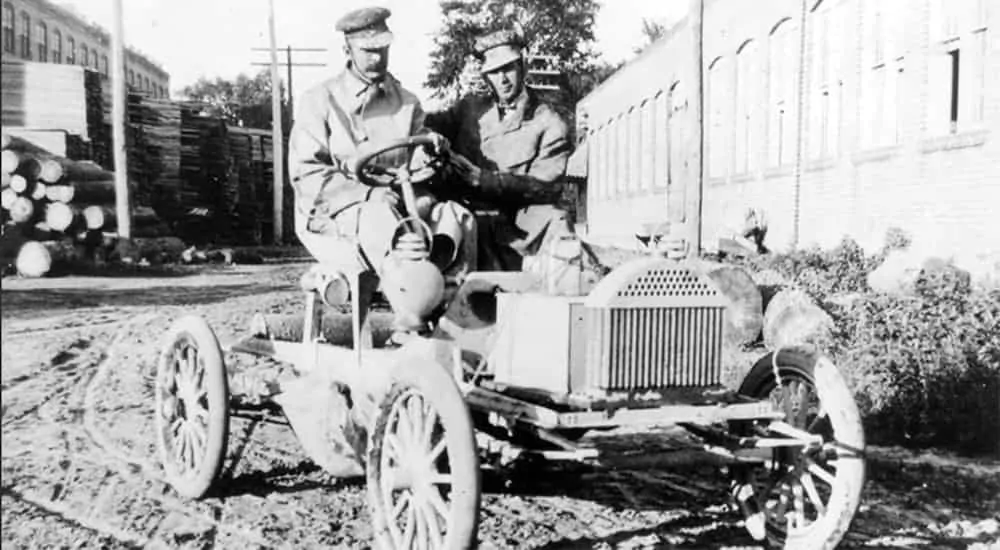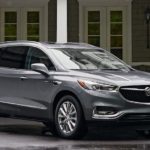Buick has been delivering shockwaves to the automotive industries for twelve decades now, so it is no surprise to anyone that the years have shone their favor on the Buick nameplate. However, times have not always been easy. Though their success is well-established, it’s worth taking a look at how much Buick has conquered in their journey to the front of the line and how you can tap into all that Buick has to offer at a Buick dealer near you!
Where It All Began
The Buick nameplate enjoys a major part as one of the most game-changing car manufacturers in the history of American automobiles, but where did it all start? Buick’s founder David Dunbar Buick and chief engineer Walter L. Marr were making engines as part of the Buick Auto-Vim and Power Company. In 1899-1900, Buick and Marr would create the first automobile for the company. However, the brand you know today actually got its start in 1903 when Buick incorporated his company in a move from Detroit to Flint, Michigan, under the new name “Buick Motor Company.”
In 1903, Buick Motor Company was considered the least successful among hundreds of small auto countries nationwide. The company had made only a few automobiles and was running out of capital fast. However, the company was able to change its luck, and by 1908 it rose to be the top automobile manufacturer, overtaking the production of both Ford and Cadillac, its closest rivals, combined. How did they do it?
From Just Buick to General Motors
In 1904, Buick Motor Company built its first Flint Buick, and its chief engineer, Walter Marr, took it on a successful test spin to Detroit. Production began from there, with 37 Model B Touring Cars built by the end of 1904. Buick’s near-bankruptcy that fall led to a partnership with William C. “Billy” Durant, owner of Durant-Dort Carriage Co., America’s largest manufacturer of horse-drawn vehicles at the time. However, Durant saw an opportunity in the automobile industry and became an integral part of the success of the company.
Buick’s new partnership sealed the deal as Bill Durant was a promotional, fundraising, and planning mastermind. Durant attended the 1905 New York Auto Show and drummed up orders for 1,000 Buick’s before the company had even produced 40. The Buick company moved for a short time from Flint to Jackson, Michigan, and manufactured over 700 Model Cs in 1905. Meanwhile, Durant promoted Buick, raised money, and persuaded big-names, such as axle developer Charles Stewart Mott, to partner with Buick. Soon, Durant would have the basis of the megacorporation General Motors.
It’s All in the Engine
Buick engines were used on the race tracks, winning 500 trophies in places like the International Motor Speedway between 1908 and 1910. Buicks even raced across South America, expanding its reach far beyond its humble beginnings. In their history, these initial wins built the pillar on which today’s largest automotive manufacturer, General Motors, was conceived.
Early on, Buick was a product trendsetter with its innovation-the overhead valve engine, which achieved international acclaim. Buick has always been known for its emphasis on motors, a fact underscored in the original overhead valve single cylinder, which was a jaw-dropping powerhouse at the time. A writer later reported that Buick’s engine delivered 22-29 horsepower, a finding that had to be tested again because many didn’t believe it. Today engines are still renowned for that innovative reliability, power, and smoothness, a combination not easily come by.
By 1908, Buick was a star on all fronts, leading America’s automobile production with just over 8,000, transforming Durant from biggest buggy seller to biggest automobile seller. In 1908, Durant created the holding company General Motors after unsuccessful merger attempts with Henry Ford and Ransom Olds, head of then REO. Durant added more than 30 companies to the GM holding company between 1908 to 1910, which created financial chaos and lost control in 1910. By co-creating the Chevrolet company, however, he gained control of GM from 1915 to 1916. Durant became president of GM and resigned in 1920. Alfred P. Sloan, Jr. became GM’s president in 1923.
Minor Bumps in the Road
Buick suffered significant losses during the Great Depression, with production sliced to just over 40,000 vehicles. In 1933, however, Harlow H. Curtice, GM’s president that year, restored the company so that production exceeded 78,000 the next year by encouraging creativity and innovation. Buick’s innovative perspective led to its continued success well into the 1940s, when Buick shifted gears to design Red Cross ambulances, tank destroyers, Liberty aircraft engines, and military hardware in response to World War II. Buick even garnered military contracts, playing a significant manufacturing role in the war throughout the war.
Buick’s postwar years meant improved style, sales, and engineering revolution for Buick. Sales skyrocketed with Buick’s torque converter automatic transmission, high-compression V-8 engine, new grille, portholes, and “Hardtop convertible style” through the 1940s and 1950s. The late 1950s brought another setback due to style issues, product complaints, and another economic recession that increased small car popularity.
From 1955 to 1959, Buick went from three-quarters of a million sales to less than a quarter of a million. 1959 brought cuts to its lineup and a new general manager. In the next few years, Buick offered notable engine and style innovations, which proved the boost Buick needed to see its sales rise throughout the 1960s.
Powering Through the Late Twentieth Century
The 1970s brought more economical engines that proved crucial for Buick to meet public demands after the oil embargo and gasoline price hikes through the mid-1970s and early eighties. Despite the damage done to the economy by high gasoline prices, Buick enjoyed increased sales and a positive response to its first front-wheel-drive Buick with a turbocharged V-6 engine, the 1979 Riviera S Type!
During the 1980s, Buick broke sales records worldwide, enjoyed numerous awards, a continued role in the Indy 500, and wide recognition as America’s fastest-built cars. By 1989, both Buick City and LeSabre were dubbed Number 1 in North America and Number 2 worldwide. Buick was a fully realized premium automobile.
Throughout the 1990s, Buick continued picking up accolades left and right for vehicles such as Park Avenue, Roadmaster, LeSabre, and more. The 2000s have brought even more innovations with the Rainier SUV, featuring Buick’s first V8 engine in eight years. In 2005, the Terraza arrived on the scene as Buick’s third SUV, and in 2008, Buick crossed over into the world of luxury vehicles with the Buick Enclave.
The Future is Bright for Buick
There is little doubt that we’ll continue to see Buick innovations as jaw-dropping as we have for over 120 years now. The future is bright for this class automotive trendsetter! Buick’s decades of innovation are a strong backing for Buick’s commitment to performance, safety, design, and technological innovations. From its humble roots as a motor manufacturing company through its rocky journey to the top of the automobile market, Buick has shown that determination and innovation are the keys to success. Visit a Buick dealer near you today to discover all of the history and class that Buick has developed over the past century and beyond.






